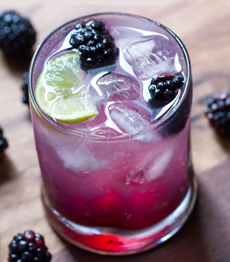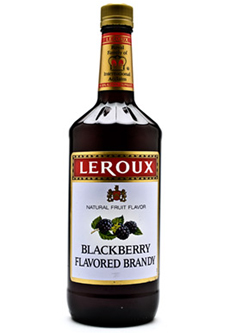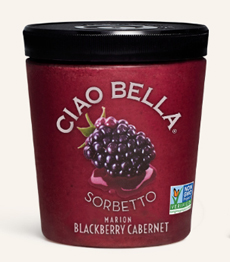TIP OF THE DAY: Try A New Cocktail Each Weekend

|
We tend to try new cocktail recipes on weekends. Life’s too short to keep to our three or four standards, much as we love them.
We keep a running list of cocktails we’d like to try. Friends and neighbors know that it’s “open house” on late Sunday afternoons: They can stop by and try the weekend’s special. We discovered a bottle of blackberry brandy in the liquor cabinet, so this weekend we’re mixing up a pitcher of Blackberry Gin Fizz: gin, blackberry brandy and Prosecco. WHAT’S A FIZZ? A fizz is a type of mixed drink—a variation on the older sour recipe. Sours are a family of mixed drinks that combine alcohol with lemon or lime juice—the sour component—plus a sweetener (fruit juice, grenadine, honey, liqueur, maple syrup, simple syrup, sugar, etc.). Sours are one of the original cocktails described by Jerry Thomas in his 1862 book, How to Mix Drinks. Famous sours include the Daiquiri (rum, lime juice and sugar), Margarita (tequila, cointreau and lime juice), Sidecar (cognac, triple sec and lemon juice) and Whiskey Sour (whiskey, lemon juice and sugar). A sour becomes a fizz with the addition of carbonated water. The first printed reference to a fizz (spelled “fiz”) is in the 1887 edition of Jerry Thomas’ Bartender’s Guide, which contains six “fiz” recipes. Adding carbonated water to a Gin Sour—gin, lemon juice and sugar—creates a Gin Fizz, a.k.a. a Tom Collins). Substituting blackberry brandy or liqueur for the sugar creates a Blackberry Gin Fizz. The Fizz became widely popular in America between 1900 and the 1940s, and spread internationally. Known as a hometown specialty of New Orleans, the Gin Fizz was so popular that bars would need to employ extra bartenders to shake them. This recipe comes from the Salt Creek Grille in Princeton, New Jersey, which used Tanqueray gin. You can make your own blackberry brandy from fresh blackberries and regular brandy (recipe below). If you have extra bottles of brandy, go for it—but note that it takes two months for the fruit to fully infuse. You can use the blackberry brandy to make Blackberry Juleps, Margaritas, Mojitos and other cocktails. |
|
|
You can also use the blackberry brandy for a variety of other drinks and foods (see below). Ingredients For 1 Drink 1. COMBINE first four ingredients in a shaker with ice. Shake and strain into an ice-filled collins glass. 2. TOP with prosecco. Garnish with a notched berry on the rim, or a cocktail pick with blackberries. Variations †We recommend Asti Spumante from Italy, Yellow Tail Bubbles from Australia, Cava from Spain (Freixenet is the most widely available): |
||
|
RECIPE #2: HOMEMADE BLACKBERRY BRANDY Don’t buy the cheapest brandy on the shelf. What you put in determines what you get out. Ingredients For 1 Liter According to StarkBros, a purveyor of fruit trees, you should wait to add the sugar until the end of the infusing process. 1. DIVIDE the blackberries and sugar among the jars; pour in the brandy. Seal the jars tightly and shake well. 2. STORE the jars in a cool, dark place, shaking every other day for a week. Then shake, once a week for two months or longer. The longer it steeps, the better the brandy will be. 3. WHEN you’re ready to drink it, strain the liquid into a 1 liter bottle (33.8 ounces). While many people use these terms interchangeably, and they are all flavored spirits, there are differences in terms of sweetness and color—and in the case of fruit brandy, the base alcohol. |

|
|
|
|
||




